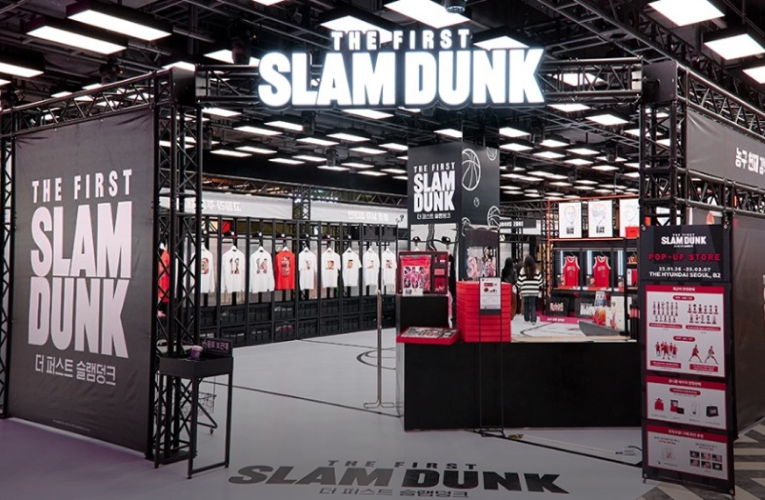
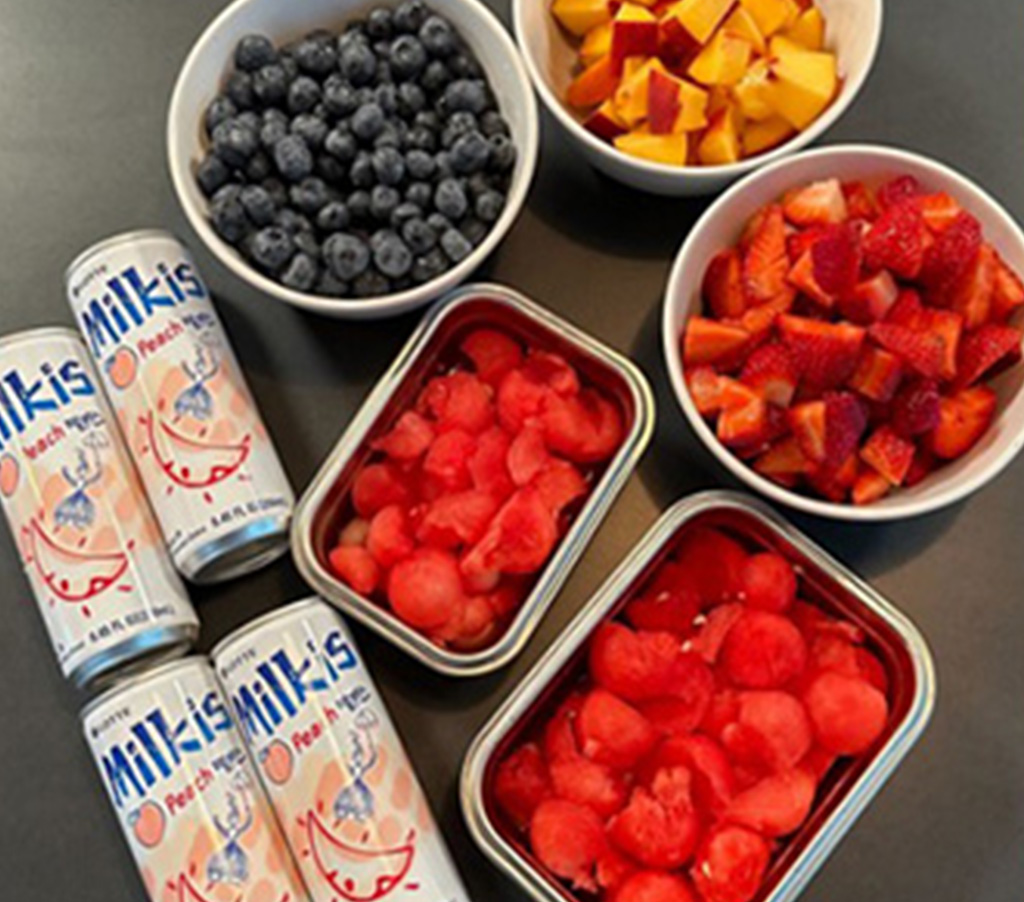
The Era of ‘Do You Know Kimchi?’ is Over

Casual Trend Insights
Part 4. The Era of ‘Do You Know Kimchi?’ is Over
Columnist
Choi HanBit Amorepacific HERA MC Team

Over the extended Chuseok holiday, several of my friends, who have been living abroad, visited Korea after a long hiatus. A dominant topic of our conversation was how “Hallyu is truly remarkable.” Although I frequently encounter overseas reactions to K-culture through the media, I assumed there might be some exaggeration. However, listening to the stories of friends who work and live abroad, the change felt palpably real.
1. The Era of ‘Do You Know Kimchi?’ is Over. Now is the Time for ‘I Know Hwache!’
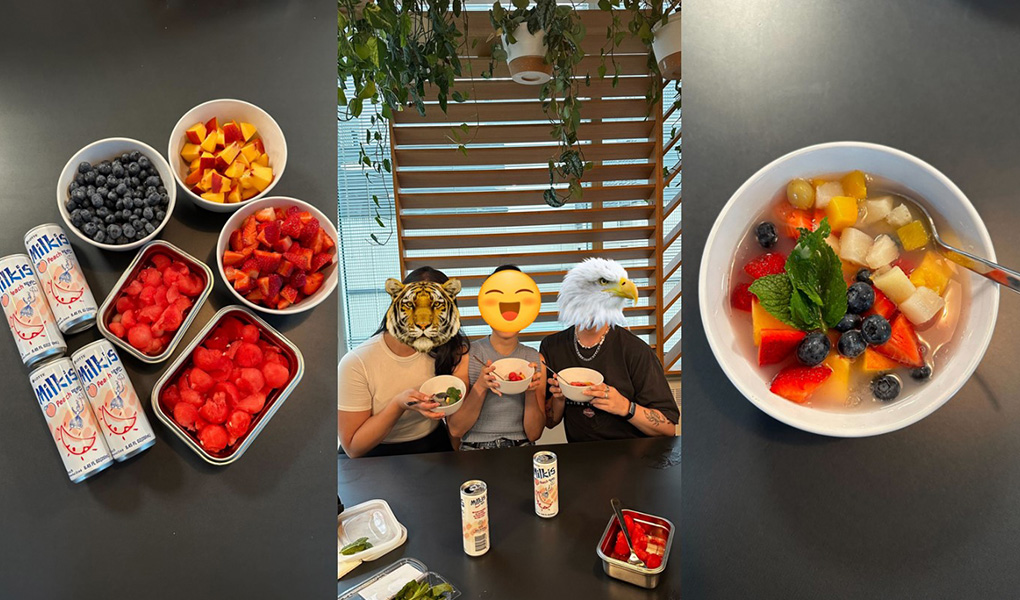
Source: Directly photographed by Canadian friend A
My friend A, living in Canada, mentioned that a recent coworker contacted her late at night after seeing ‘hwache’ on TikTok, expressing a desire to try making it. The next day at work, she prepared hwache using Mexican watermelons, strawberries, fruit mix, and Milkis — a carbonated drink. She said her coworker loved it. Korean seaweed snacks were already available in the company's snack pantry, but she was amazed to discover that even the somewhat unfamiliar ‘hwache’ was becoming a trend.
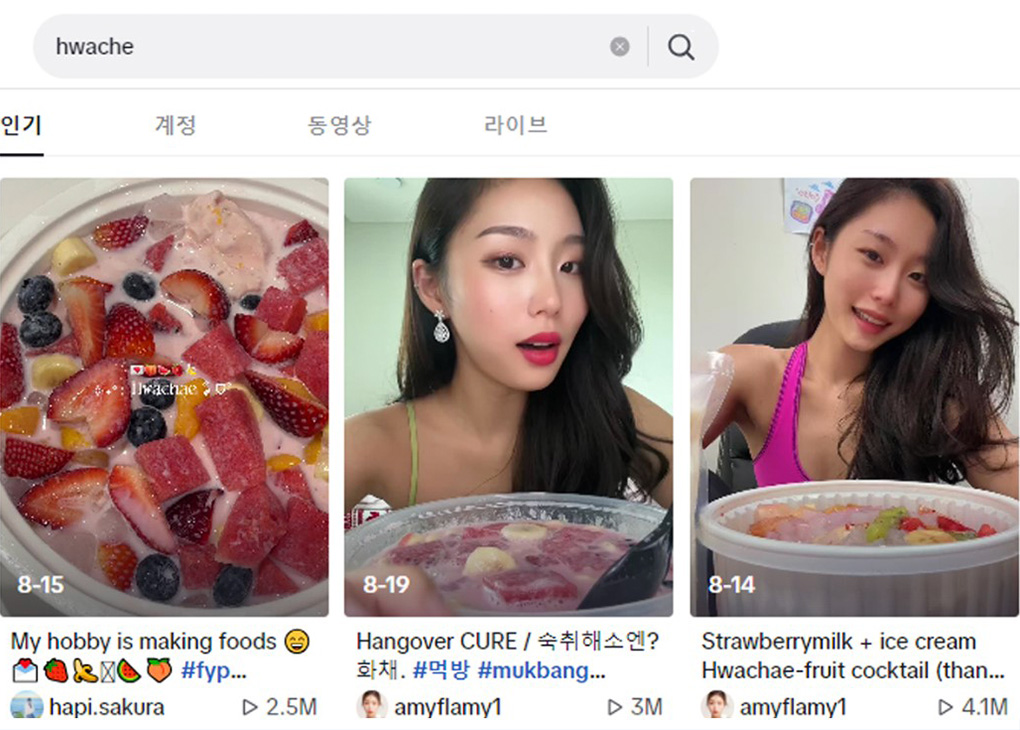
Source: TikTok
The TikTok hwache sensation began when a video of a prominent influencer consuming hwache surpassed 170 million views. TikTokers introduce hwache as the “Korean Fruit Punch.” Instead of the watermelon typically used in Korea, they add blueberries, dragon fruit, strawberries, tapioca pearls, and other locally available fruits, then pour in milk. They also experiment with soda, ice cream, strawberry milk, and other ingredients to make it uniquely theirs.
According to Google Trends, the hwache trend has been surging, especially since August. It's overwhelmingly popular in Southeast Asian regions like Singapore, the Philippines, Indonesia, and Malaysia. Moreover, in English-speaking countries like the U.S. and Canada, it's introduced as a “Korean cold fruit salad” and is perceived as a diet food.
2. Japan Now Embracing the Pilates Trend

Source: https://chocolat-official.jp/blog
My Japanese friend B shared that recently, Japanese people have taken up “Pilates.” As Korean idols frequently credit ‘Pilates’ as their fitness secret, Japanese workers began to follow suit. While swimming and hot yoga have been popular in Japan, machine-based Pilates is only now becoming mainstream. Interestingly, it's being marketed as “Korean-style Pilates.” Consequently, there's a notion that “Pilates is cheaper in Korea but overly pricey in Japan.” I had always assumed Pilates became trendy in Japan first and then transitioned to Korea, so this revelation was quite surprising.
Having been greatly assisted by this friend during a recent trip to Japan, I wanted to gift her something as a small token of appreciation. For a while, I pondered current Korean trends, such as yakgwa (honey cookie) and other fashionable items. However, I soon realized that most of these trends are almost simultaneously consumed in Japan, leading to the epiphany that a “Korean trend hard to find in Japan” doesn't exist.
Mukbang content in Japan is called “モッパン (Muk-bang)” and significantly influences the rapid consumption of K-trends. With the rise of Mukbang ASMR, the recognition of yakgwa has grown in Japan. The creator of the most popular character in Japan, ‘Chiikawa (Something Small and Cute),’ tasted these honey cookies and highly praised them, boosting their popularity. They have become mainstream snacks you can easily find even in Don Quijote stores. (On a side note, I ended up gifting her Bellflower root candy, which, to my relief, is yet to be found in Japan. 😊)
3. Friends Living Abroad Discuss K-Beauty in Real-Time.jpg
I had a casual chat with my friends about K-beauty.
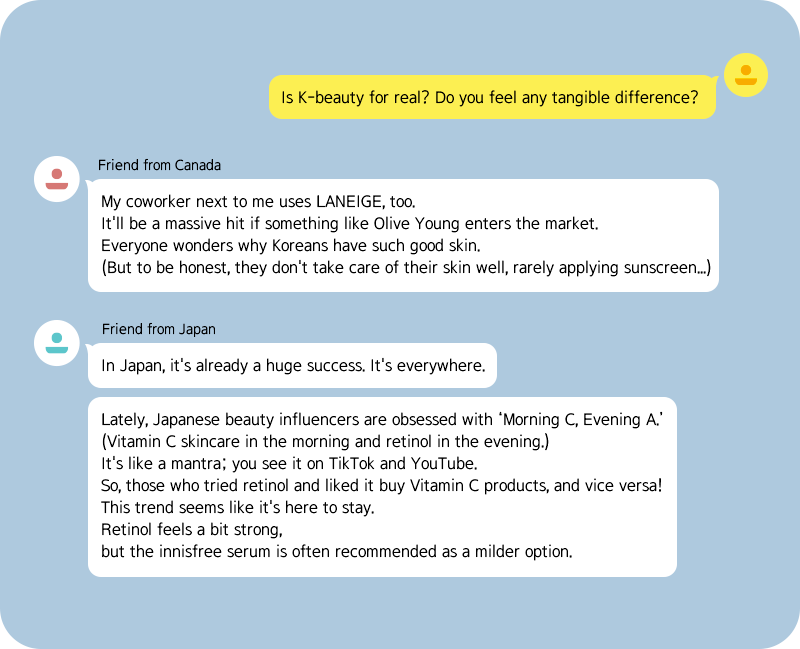
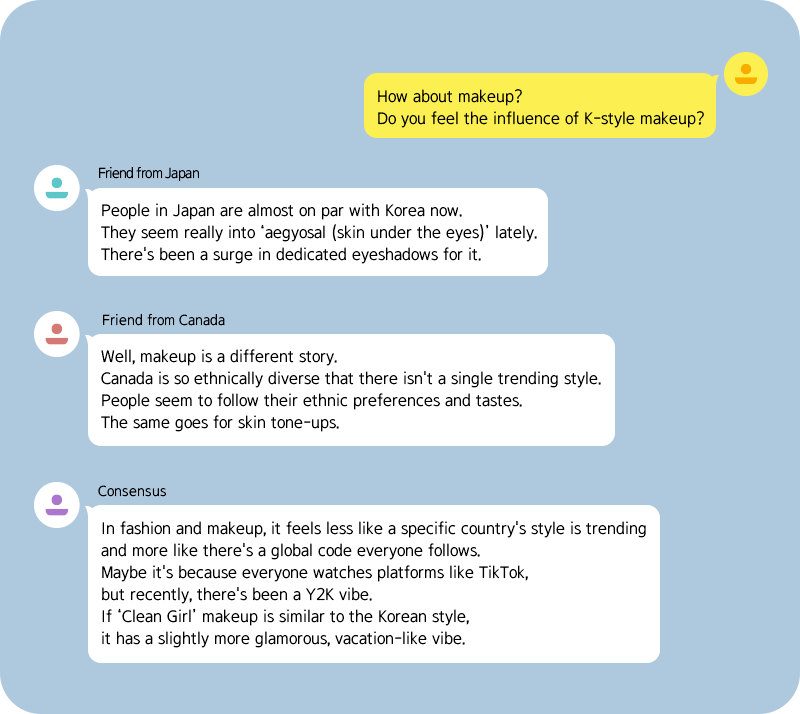
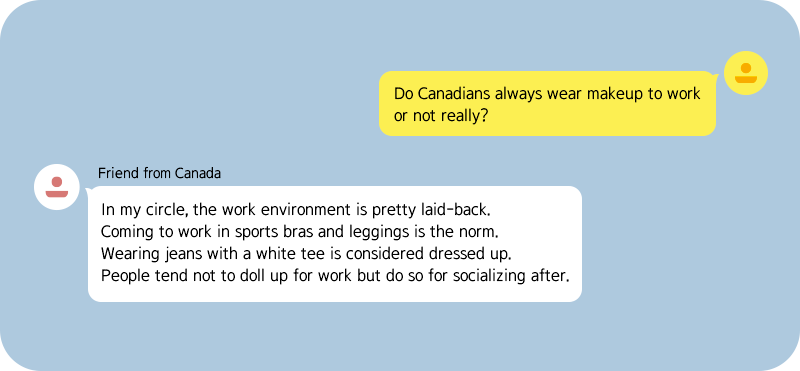
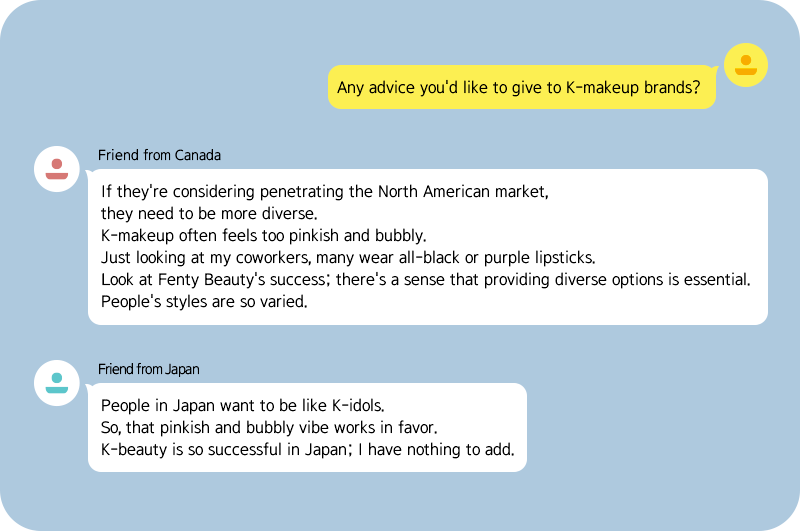
In Conclusion
Engaging in conversations with friends worldwide made it abundantly clear that diverse K-contents are positively embraced globally, suggesting that K-beauty also possesses vast growth potential. The perception that Korea is trendy and delicately attuned may pave the way for K-beauty consumption. However, while other K-contents organically command a strong and sustained fandom, propelling K-beauty as a brand to achieve a similar viral effect may be challenging.
I recently attended a seminar where Mr. Lee Do-hoon, the creative director of Andersson Bell, shared his insights from collaborating with global designers and buyers. He remarked, “We shouldn't perceive Korea as a remote, small country, simply trying to pursuade overseas customers to buy our products. People don't simply appreciate Andersson Bell because it's a Korean brand; they love its style. Adding that it's based in Korea makes it all the more intriguing. We should now stop segregating Korea from the global arena and consider Korea an integral part of it while developing our brands.” His words left a lasting impression.
Witnessing elements of our culture, which Koreans often take for granted or deem mundane, like yakgwa or hwache, garnering praise overseas, prompts reflection. The journey might be daunting, but I remain hopeful, believing that there remains untapped potential within us, perhaps hidden from our eyes. With this hope, I conclude this part of the series.
-
Like
5 -
Recommend
1 -
Thumbs up
5 -
Supporting
0 -
Want follow-up article
0





